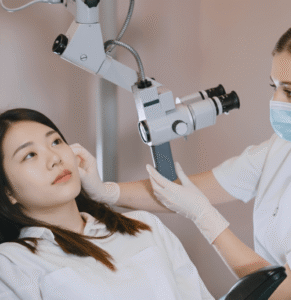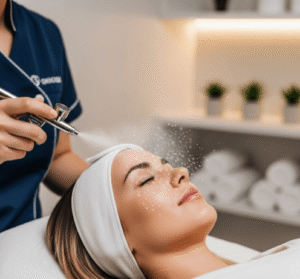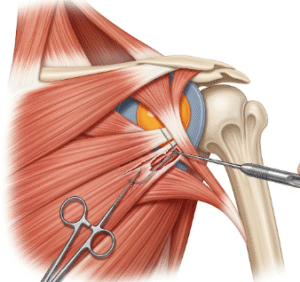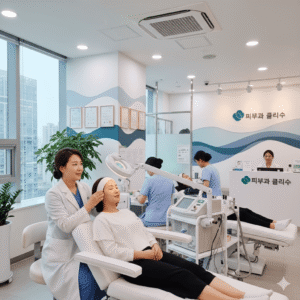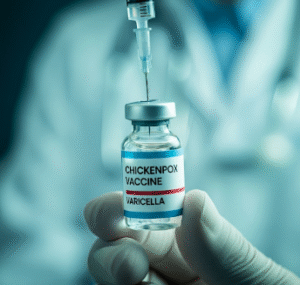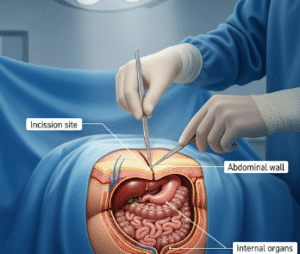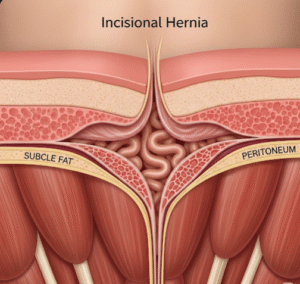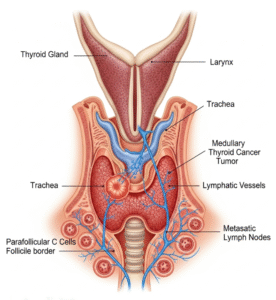What It Is
Temporalis tendon transfer is a reconstructive surgical procedure used to restore smile function and facial movement in patients with facial paralysis. The temporalis muscle, a chewing muscle located on the side of the head, is redirected and connected to the corner of the mouth. This allows patients to regain the ability to smile by activating the temporalis muscle.
In Korea, this procedure is performed by plastic and reconstructive microsurgeons, often as part of advanced facial reanimation programs that combine microsurgery, nerve grafting, and functional rehabilitation.
Why It’s Done
Temporalis tendon transfer is recommended for patients with:
- Long-standing facial paralysis where facial nerves cannot be repaired
- Congenital facial palsy (such as Moebius syndrome)
- Facial nerve paralysis after tumor removal or trauma
- Incomplete recovery after nerve grafts or other reanimation surgeries
The main purpose is to restore a functional, natural-looking smile and improve facial symmetry.
Alternatives
Depending on the cause and severity of paralysis, other options include:
- Nerve grafts or cross-face nerve grafting: Best for early-stage paralysis when nerves are still viable
- Gracilis free muscle transfer: Microsurgical transplant of a thigh muscle to the face for smile restoration
- Static suspension (facial slings): Provide symmetry at rest but do not restore active movement
- Botulinum toxin injections: Improve facial balance temporarily by reducing muscle overactivity on the unaffected side
Temporalis tendon transfer is a reliable option when nerve-based approaches are not possible or have failed.
Preparation
Before surgery in Korea, patients undergo:
- Comprehensive consultation: With a facial reanimation specialist
- Facial analysis: To assess muscle tone, degree of paralysis, and symmetry
- Imaging: CT or MRI scans may be used to evaluate anatomy and exclude other conditions
- Medical clearance: Blood tests and anesthesia evaluation
- Patient education: Learning about smile training exercises post-surgery
How It’s Done
The procedure is performed under general anesthesia and typically lasts 2–4 hours.
- A small incision is made near the temple and inside the mouth or at the nasolabial fold
- The temporalis tendon is carefully detached from its normal insertion on the jaw
- The tendon is redirected and attached to the corner of the mouth
- Sutures are placed to secure the tendon, restoring elevation of the mouth during temporalis muscle activation
- In some cases, modifications (like lengthening with fascia lata graft) are made to achieve optimal movement
Recovery
Recovery after temporalis tendon transfer is generally well tolerated:
- First week: Swelling and mild discomfort around the temple and mouth region
- Hospital stay: Usually 2–4 days
- Return to activities: Light daily activities in 1–2 weeks; full recovery takes several months
- Rehabilitation: Patients undergo smile training exercises to learn how to activate the new smile mechanism naturally
- Final results: Visible within weeks, with gradual improvement as patients adapt to the new muscle function
Possible Complications
While safe and effective, potential risks include:
- Asymmetry of the smile or mouth movement
- Overactivity or restricted motion of the transferred tendon
- Scarring at incision sites (usually well hidden)
- Infection or bleeding (rare)
- Need for revision surgery to refine results
Treatment Options in Korea
Diagnosis
- Detailed clinical evaluation by a facial reanimation team
- Electromyography (EMG) to assess facial muscle activity
- Imaging when needed to exclude underlying causes
Medical Treatments
- Facial physiotherapy before and after surgery
- Botulinum toxin injections for muscle balance on the unaffected side
Surgical or Advanced Therapies
- Traditional temporalis tendon transfer: Reliable for long-standing paralysis
- Lengthening temporalis myoplasty (LTM): Modified technique for more natural smile dynamics
- Combination with gracilis free flap: In complex cases requiring additional movement or volume
- Adjunctive eyelid procedures: Such as gold weight implants for eye closure if needed
Rehabilitation and Support
- Smile retraining with physiotherapists
- Scar care and follow-up monitoring
- Psychological and social support for patients adjusting to facial reanimation
- International patient coordination with translators, hospital navigation, and virtual follow-ups


